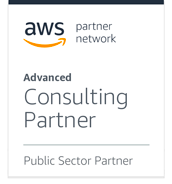Cloud Migration
Cloud migration involves moving digital business operations into the cloud. This complex process is strategic and necessitates careful planning and execution to ensure a smooth transition that meets specific business, technical, and operational goals. The first step in this journey is to select your cloud model and then define the cloud migration process.
Help me migrate
1. STRATEGY
Chosing a Migration Strategy
The 5 Rs of cloud migration—Rehost, Refactor, Revise, Rebuild, and Replace—offer a framework to guide the strategic approach to moving applications and workloads to the cloud.
Rehost (Lift and Shift)
Move applications and data to the cloud without changes. Fast and cost-effective, suitable for quick migrations.
Refactor (Repackage)
Make minimal changes to applications to fit a cloud environment, leveraging cloud efficiencies without a full-scale rewrite.
Revise (Replatform)
Modify or extend the existing code base to optimize for the cloud, which might involve changing the database or leveraging cloud-native services.
Rebuild (Refactor)
Rebuild applications from scratch using cloud-native technologies, allowing for maximum scalability and performance but requiring significant investment.
Replace (Retire/Rebuy):
Move to a different product, typically a SaaS solution, which might involve retiring the existing application.
2. PLANNING & EXECUTING
Execution, Execution, Exection!
Execution in project management is like trying to herd cats in a thunderstorm—chaotic, unpredictable, and requiring a peculiar blend of patience, agility, and a sense of humor. Just when you think you have all your felines aligned, a bolt of lightning (or an unforeseen challenge) scatters them in different directions. It demands the finesse of a cat whisperer and the strategic foresight of a chess master, all while juggling fireballs (or deadlines). The key to successful execution isn't just about keeping the cats dry; it's about embracing the chaos, adapting on the fly, and sometimes, just sometimes, convincing the cats to wear tiny raincoats.
Request strategic and tactical help today!Migration Plan
We'll work with you to create a comprehensive plan, detailing the inventory of applications, workloads, and data to be migrated. This plan prioritizes workloads based on complexity, dependencies, and business importance, while identifying pre-migration adjustments to ensure compatibility with the cloud.
Environment Preparation
Foundational landing zones need to be configured in the cloud to receive migrated assets. This includes configuring networks for secure connectivity, establishing necessary cloud resources like storage accounts and VMs, and implementing security and compliance measures aligned with organizational policies.Pilot Migration
This process on a small scale, highlighting potential issues and validating the migration approach. Insights from this phase guide adjustments to the migration strategy, ensuring readiness for the full-scale migration.
Optimization and Modernization
Beyond initial migration, Takumi Cloud helps organizations continuously optimize their cloud environments for cost, performance, and scalability. This includes leveraging cloud-native services, implementing DevSecOps practices, modernizing applications to be more cloud-friendly, and adopting innovative technologies like AI and analytics to drive business value.
Post-Migration Activities
Validation and Testing: Conduct thorough testing to ensure all systems operate correctly in the new cloud environment
Documentation and Training: Update documentation and provide training to staff to facilitate the transition to cloud operations.
Operational Handover: Transfer knowledge and control to the operational teams responsible for day-to-day cloud management.
Ready and equipped for a seamless transition!

-
Technical workshop
Our team of specialists will conduct a thorough analysis of your infrastructure and requirements to recommend an optimal target architecture and migration plan. Together, we'll determine the migration scope, identifying which elements require immediate migration and which do not. Understanding the driving factors behind this migration is crucial for our experts, as it allows us to address the specific challenges you're facing.
-
Project successes
Together, we chart the path to success. The objective behind defining a success is straightforward: to guarantee the resolution of all issues you aim to address. Each success is marked by a specific metric that indicates whether the goal has been met, along with a set timeline.
For instance, we collaborated with a client eager to transition to Kubernetes, facing challenges with lengthy deployment times and complexity in their staging environment. Our evaluation focused on two key metrics: the reduction of deployment time in staging and the decrease in manual interventions required to update the staging area.
-
Milestones
Together, we establish the project's milestones, taking into account your specific constraints, such as holidays and marketing events. These milestones represent the significant phases of the project, serving as checkpoints to ensure we are progressing towards our defined objectives. For instance, during a migration project, these milestones typically include the scheduled migration dates for each service or application that needs to be moved.
-
Visibility
Transparency is paramount in our partnership. Every morning, you'll receive an email outlining our agenda for the day. We also operate on a weekly sprint basis.
At each sprint's conclusion, we'll hold a review meeting to cover our achievements, outline the next week's goals, and discuss our advancement towards our predefined objectives. We actively engage your teams in this process to foster collaboration and enhance efficiency.
Migrate my infrastructure
Migration done right the first time.
 Amazon Web Services
Amazon Web Services
 Microsoft Azure
Microsoft Azure
 Docker
Docker
 Kubernetes
Kubernetes
 Google Cloud
Google Cloud

Our partners
Google Cloud, Amazon AWS, Microsoft Azure, and Kubernetes trust us to implement their technologies in for our clients.



